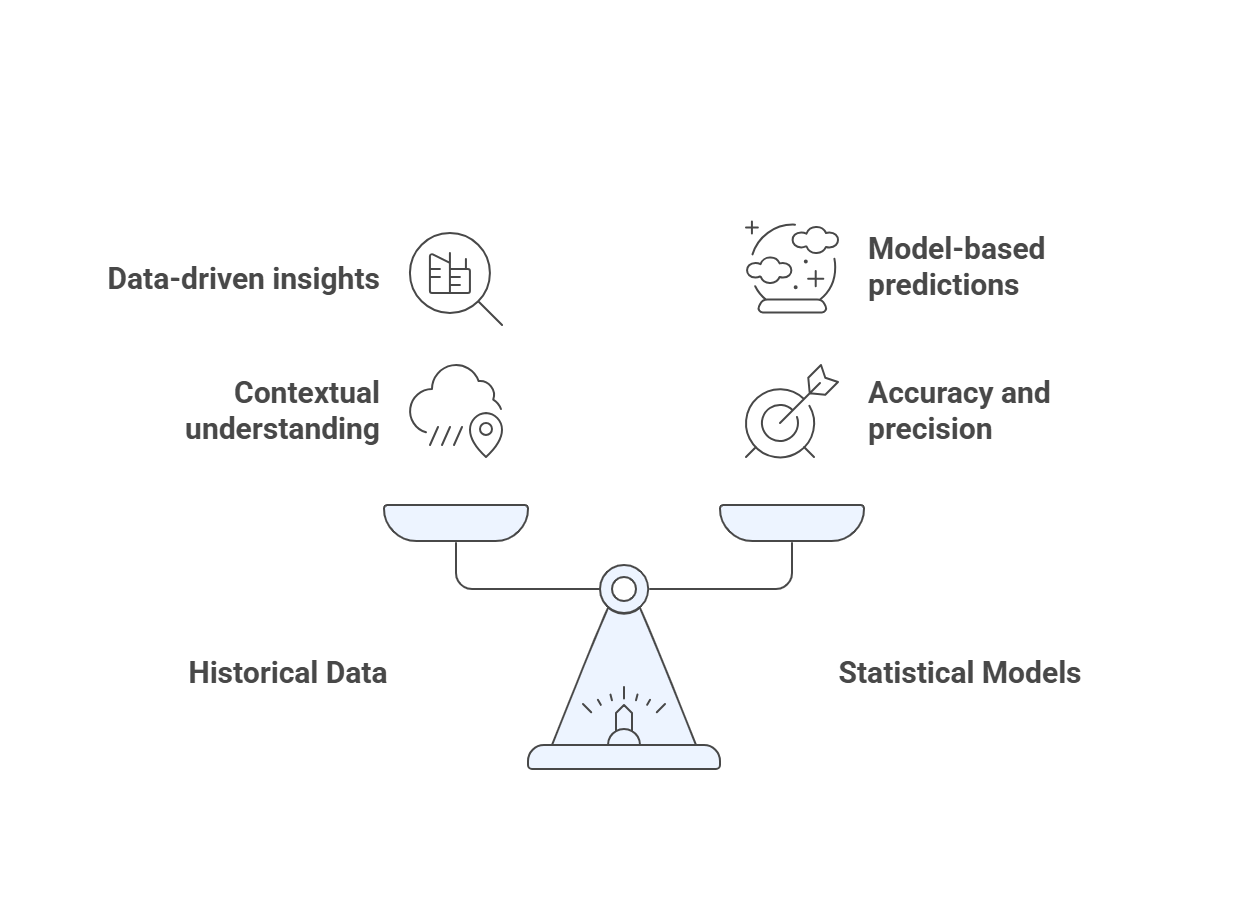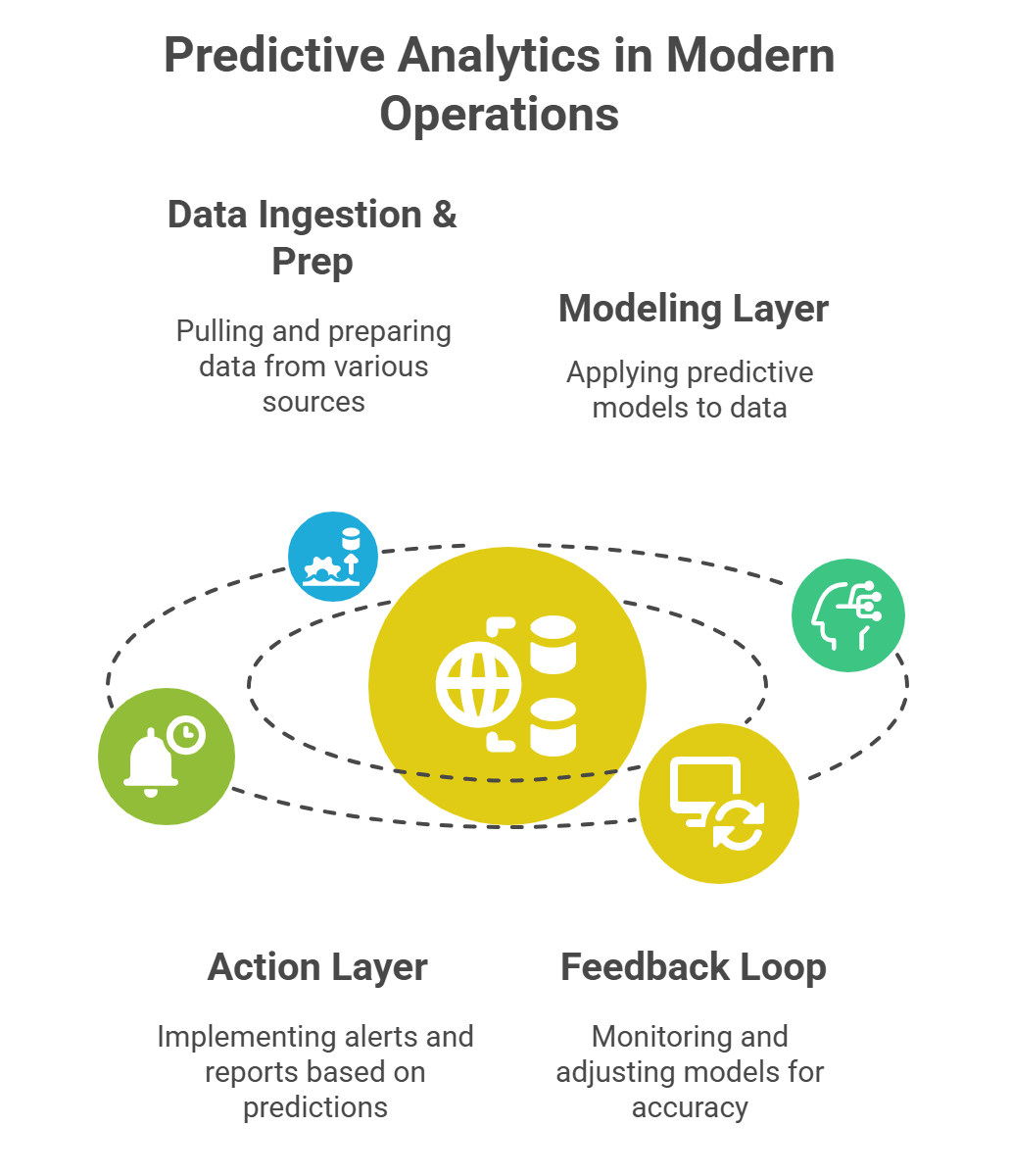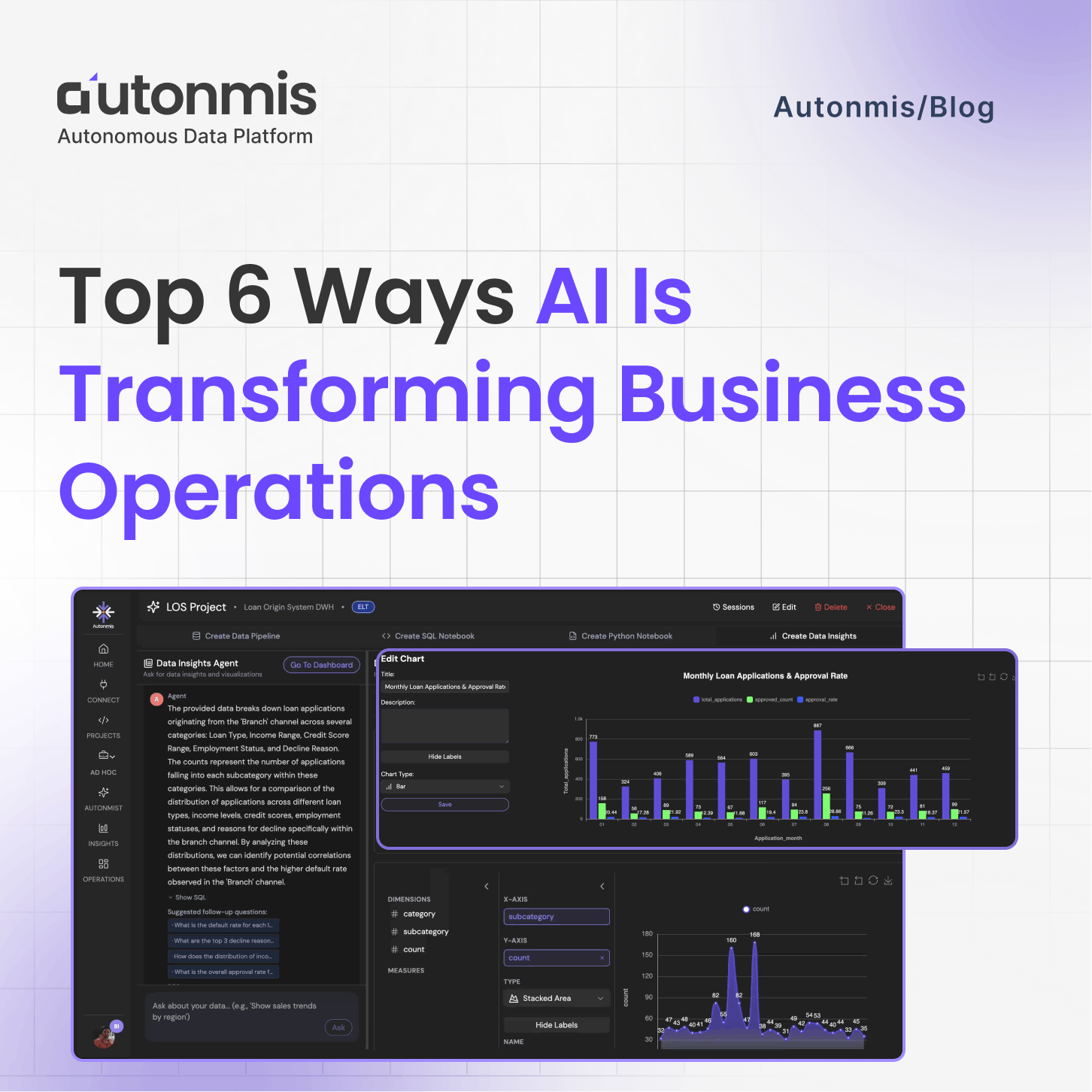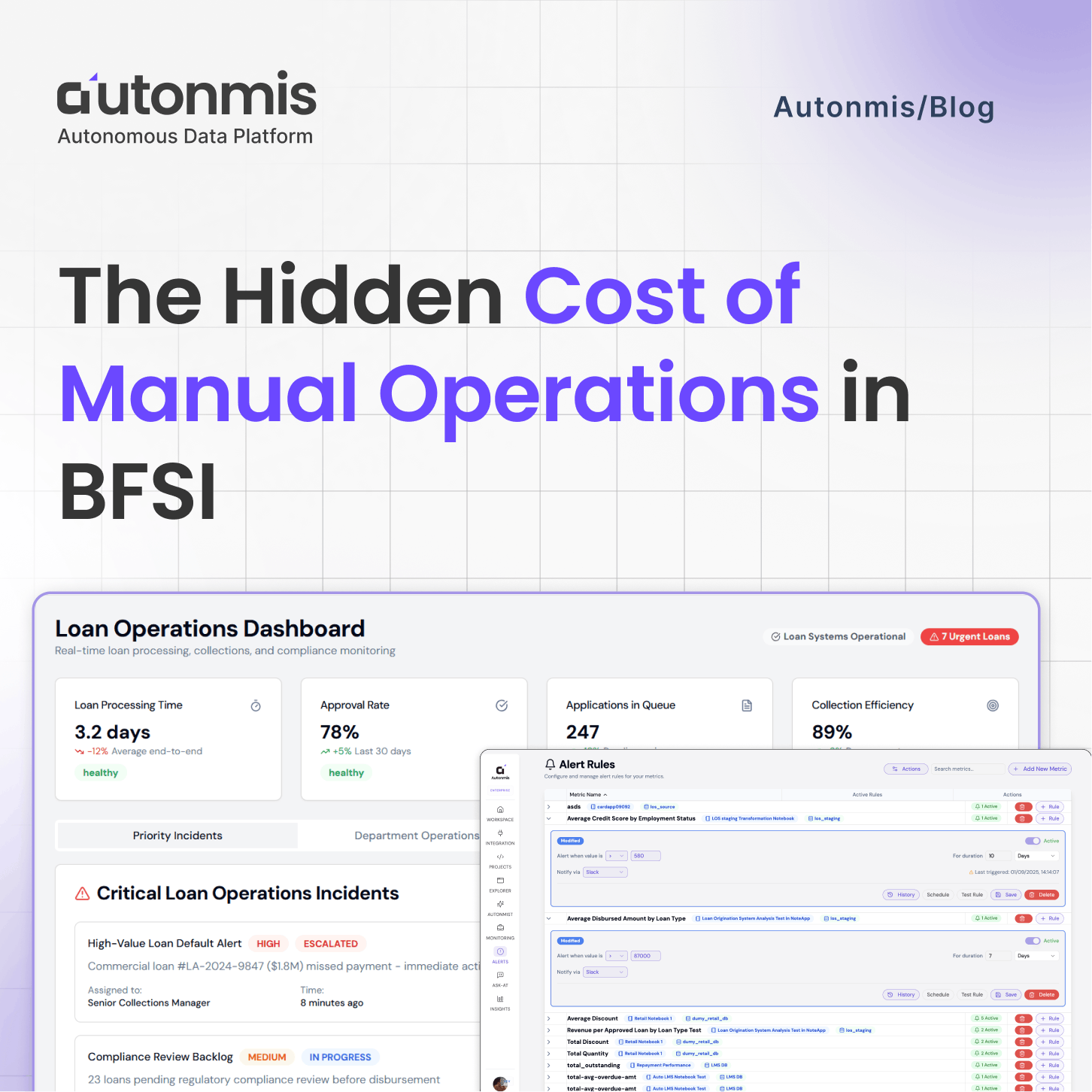8/11/2025

AB
How Predictive Analytics Improves Operational Efficiency
Uncover how the predictive analytics improves operational efficiency. Learn to anticipate challenges and seize opportunities before they arise.

Why This Isn’t Just Another “AI Can Do Everything” Story
If you run operations at a scaling company, you know the truth: most inefficiency doesn’t come from bad intentions, it comes from late signals.
Inventory runs short, support tickets pile up, delivery SLAs slip and you only notice once the damage is already measurable.
Predictive analytics improves operational efficiency and changes that game. Instead of chasing yesterday’s problems, you get an early-warning system that surfaces risks before they spill over, and spots opportunities before competitors do.
What Predictive Analytics Really Means
At its core, Predictive Analytics Improves business ops through:
- Historical data - everything from ERP logs to IoT sensor streams.
- Statistical and ML models - regression, time-series forecasting, anomaly detection.
- Operational context - knowing that a “delay” in Mumbai during monsoon season means something different than in March.
The result?
You’re no longer asking “What happened?” - you’re answering “What will happen, and what should we do now?”

Checkout: How to Improve Operational Efficiency in Fintech
Why Operational Efficiency Is the Perfect Playground
Efficiency isn’t just about doing things faster, it’s about eliminating the silent friction in your processes.
Predictive Analytics Improves Operational Efficiency in three high-leverage ways:
1. Anticipating Demand and Capacity
- Retail & Supply Chain: Predict seasonal spikes down to SKU level.
- Manufacturing: Plan production runs to match forecasted orders, reducing idle capacity and overtime.
- Example: Walmart famously cut inventory costs by 15% by aligning stock levels with predictive demand signals.
2. Preventing Bottlenecks Before They Form
- Monitor lead times, approval queues, machine usage patterns.
- Trigger early interventions when indicators cross risk thresholds.
- For service operations, this might mean staffing call centers before peak load hits, not after wait times explode.
3. Optimizing Resource Allocation
- Match workforce schedules, fleet routes, or cloud compute resources to expected needs.
- Reduce waste, whether it’s unused trucks or underutilized licenses.
How Predictive Analytics Fits Into Modern Ops Stacks
The old way:
- BI dashboard → see the metric → manually investigate → send Slack pings → wait for updates.
The predictive way:
- Data Ingestion & Prep
Pull structured data from ERP, CRM, logistics trackers.
(Autonmis, for example, supports no-code ingestion from SaaS, databases, and flat files.) - Modeling Layer
Apply time-series forecasts, anomaly detection, or classification models.
Predictive Analytics Improves business ops by making the modeling layer directly useful to non-technical teams. - Action Layer
Rule-based alerts: “If delivery delays > 3% for Lane X, ping Ops Lead.”
Automated reports sent to Slack/email on a set cadence.
Interactive control towers for decision-makers. - Feedback Loop
Monitor accuracy, retrain models, adjust thresholds - keeping predictions grounded in current reality.

Checkout: Operational Intelligence vs Business Intelligence: What’s the Difference?
The Autonmis Angle: From Prediction to Immediate Action
A common frustration with predictive analytics is that insights get stuck in slide decks.
Autonmis solves this by merging prediction and execution surface into the same live portal:
- Ops Dashboards: Not static charts, interactive control rooms per business unit.
- Integrated AI Copilot: Generate new analysis or tweak models via plain-text prompts.
- Embedded Escalation Logic: Predictive Analytics for Operational Efficiency can trigger workflows, not just suggest them.
- Unified View: No tool-hopping between data, chat, and ticketing.
For example:
A loan ops team could see predicted TAT breaches by region, get automatic Slack alerts, and reassign workloads - all inside one platform.
Challenges & How Leaders Overcome Them
Predictive analytics isn’t a silver bullet. Technical leaders need to plan for:
- Data Quality: Garbage in = garbage predictions. Build a habit of upstream data hygiene.
- Model Transparency: High-stakes ops decisions need explainable outputs.
- Change Management: Teams must trust and act on the predictions, otherwise, you’re just adding another dashboard.
Leaders who succeed:
- Start with a narrow, high-impact use case (e.g., SLA breach prediction).
- Build quick wins into roll-outs.
- Treat models as living assets - continuously monitored, not “set and forget.”
Looking Ahead: The Future of Predictive Ops
Emerging trends worth tracking:
- Edge AI for on-device predictions in logistics and IoT-heavy environments.
- Hybrid Human-AI Decisioning, where models flag risks but humans choose interventions.
- Operational Intelligence Platforms - the next wave after BI dashboards, combining real-time context, predictive modeling, and direct action surfaces.
This last category is where platforms like Autonmis are staking their claim:
Not just telling you what might happen, but letting you change the outcome without leaving the screen a perfect case of how Predictive Analytics Improves Operational Efficiency in practice.

Checkout: How to Improve Business Operations: A Practical Guide
Final Word
Predictive Analytics for Operational Efficiency isn’t about chasing a fad, it’s about building a habit of looking ahead, not behind.
For technical leaders, the question is no longer “Should we use it?” but “Where in our ops will prediction make the fastest, clearest impact?”
If your team can answer that, the jump from reactive to proactive is just a matter of execution, and that’s where Predictive Analytics Improves business ops most.
Recommended Learning Articles

10/23/2025
Top 6 Ways AI Is Transforming Business Operations

9/22/2025

AB
The Hidden Cost of Manual Operations in BFSI
Actionable Operational Excellence
Autonmis helps modern teams own their entire operations and data workflow — fast, simple, and cost-effective.